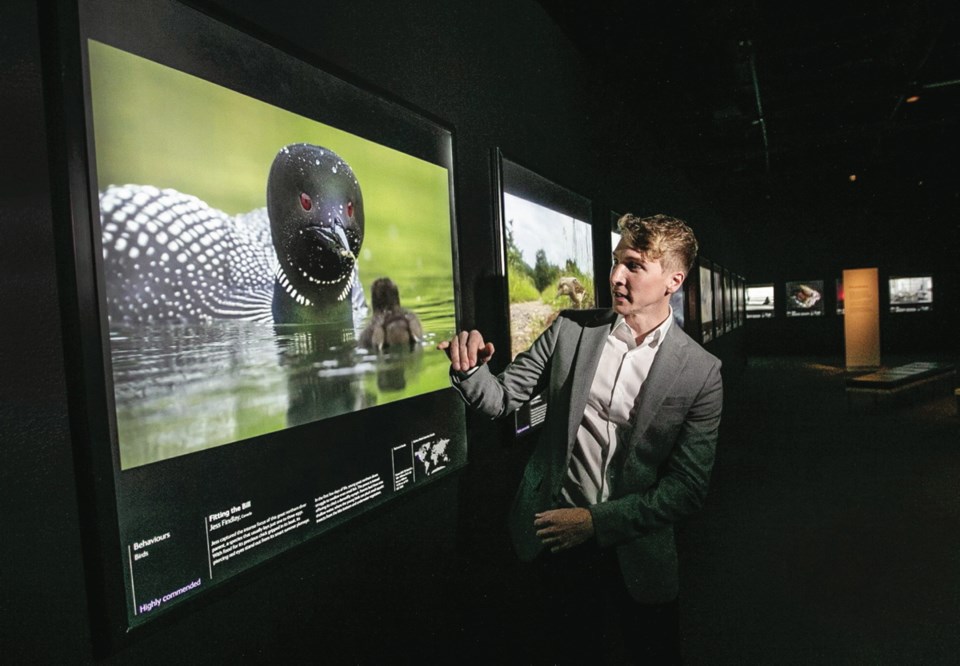It took a telephoto camera lens and leaning awkwardly over the side of a boat, but the resulting image of a loon and chick has carved Richmond-based photographer Jess Findlay a place among the best in the world.
“I had to lean out and down over the side of the already-low fly-fishing boat,” Findlay, 26, said Thursday. “Then it was not the easiest process to lower the several-thousand-dollar lens over the water to get this unique angle, right at the bird’s eye level.”
Findlay was speaking at the Royal B.C. Museum, where his picture, titled Fitting the Bill, is featured in the Wildlife Photographer of the Year exhibit opening today for a six-week run, its only appearance in Western Canada.
Now in its 54th year, the annual international show contains 100 images selected by a panel of judges from more than 50,000 submitted.
The show is curated by the Natural History Museum in London. Viewers are offered enlarged backlit images with a few words describing the picture and how it was captured by the photographer.
Joanne Orr, deputy CEO of the Royal B.C. Museum, said the Wildlife Photographer of the Year exhibit is an annual favourite.
Orr said the images contain more than reflections of the Earth’s beauty.
They also provoke viewers to consider their own roles on the planet.
“These images challenge us to consider our place in the natural world and our responsibility to protect it,” she said. “It’s a responsibility British Columbians take very seriously.”
Findlay said he has spent years visiting the lake in the Cariboo where the loon picture was snapped, photographing the birds and their chicks. (He declined to reveal the lake’s name to protect the birds from too many visitors.)
“I believe they have come to know and trust us and our boats and even leave us alone with their chicks,” he said. “That would allow us to get into position with our lens low over the water.”
He said the loons’ winter plumage, seen regularly on the sea off Victoria, is plain. But in the spring and early summer, they develop spectacular black and white patterns and iridescence around the head.
When the chicks are young, the parents must catch small prey for them, beginning with nymphs and water insects before they progress to small fish.
Findlay said the loon will shuttle back and forth, diving in the shallows to catch a bug, then returning and surfacing near the floating chick to offer the food morsel.
“The level of diligence and care these parents show is completely amazing,” he said.
Findlay said he prefers to snap pictures at the eye levels of his subject.
For the loons, that meant catching the parent as the chick would see it during those few seconds the adult took to surface, feed the chick and dive again for another morsel.
“You have only a few moments where they surface on the top of the water and the hungry chick consumes the prey,” he said.
The loon photo also offers a unique view of a visually interesting bird, said Findlay.
“They look very regal and sleek from the side,” he said. “But when you see them from the baby bird’s perspective, with food coming in, it really changes their look.
“They can look quite bizarre.”
The Wildlife Photographer of the Year Exhibit runs until March 24.



